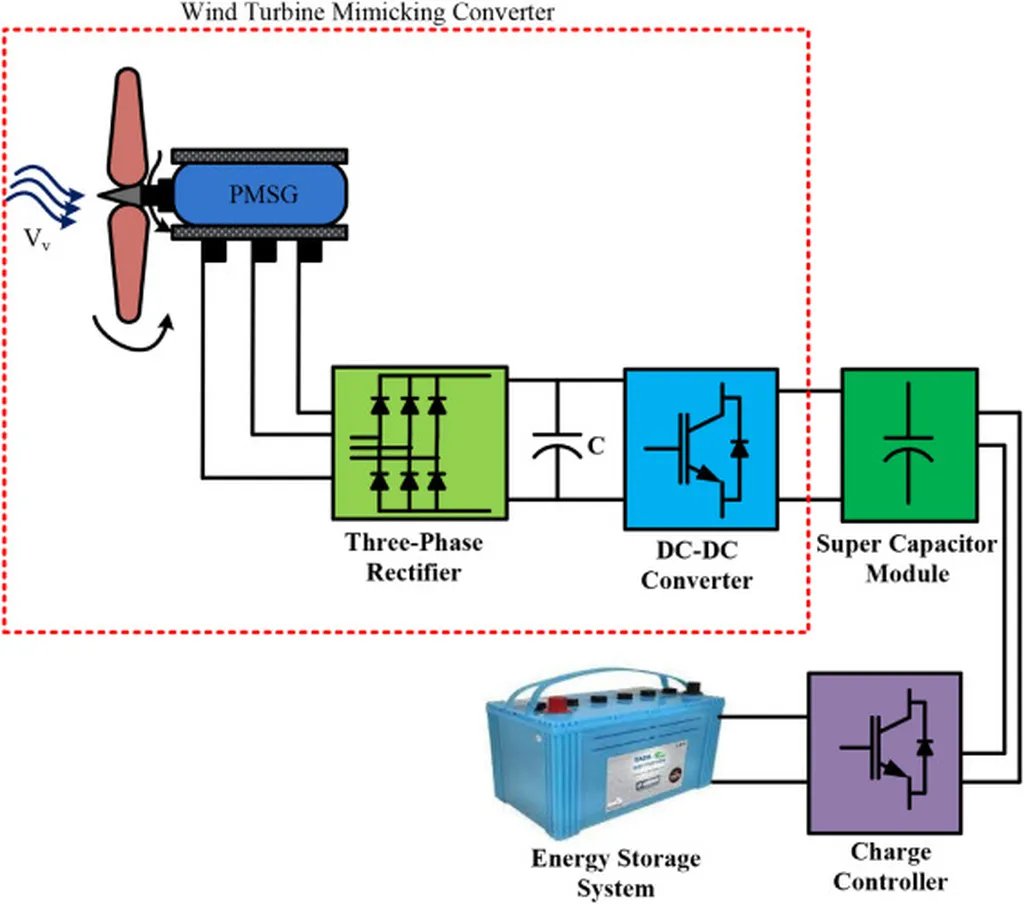In the pursuit of a greener energy future, wind power has emerged as a key player, but its intermittent nature poses significant challenges to power system stability. A recent study published in the *Journal of Applied Science and Engineering* offers a promising solution to mitigate these fluctuations, potentially revolutionizing the way we integrate wind energy into the grid.
The research, led by Ge Cao from the School of Electrical Engineering at Xi’an University of Technology, focuses on the optimal allocation of supercapacitor energy storage system (SCES) capacity to smooth out wind power fluctuations. This is particularly relevant as the world grapples with the “double carbon” goal—reducing carbon emissions while increasing the share of renewable energy in the power mix.
Cao and his team employed empirical modal analysis to dissect wind power curves, separating them into low-frequency and high-frequency signals. This allowed them to reconstruct the data and better understand the fluctuations. “By distinguishing between these signals, we can more accurately target the fluctuations that need to be smoothed out,” Cao explains.
The study then established a capacity allocation model for SCES, aiming to minimize both the fluctuation volume and the investment and operation costs. The researchers used actual area data for computational analysis and employed the K-means algorithm to group data points into clusters, reconstructing typical days and setting maximum fluctuation limits.
The results were impressive. The capacity configurations for the supercapacitors were calculated to be 24.06 MW and 30.34 MW for two different scenarios, demonstrating the method’s effectiveness in flattening wind power fluctuations. “Our method not only ensures power system stability but also does so in a cost-effective manner,” Cao notes.
The implications for the energy sector are significant. As wind power continues to grow, the need for effective fluctuation smoothing technologies becomes increasingly critical. This research provides a robust framework for optimizing SCES capacity, potentially reducing costs and improving the reliability of wind power integration.
Moreover, the use of the K-means algorithm for data clustering offers a novel approach to handling large datasets, which could be applied to other areas of energy research. “This method could be a game-changer in how we analyze and manage renewable energy data,” Cao suggests.
The study’s findings were published in the *Journal of Applied Science and Engineering*, a testament to its scientific rigor and potential impact. As the world moves towards a more sustainable energy future, research like this will be crucial in overcoming the technical challenges of renewable energy integration.

